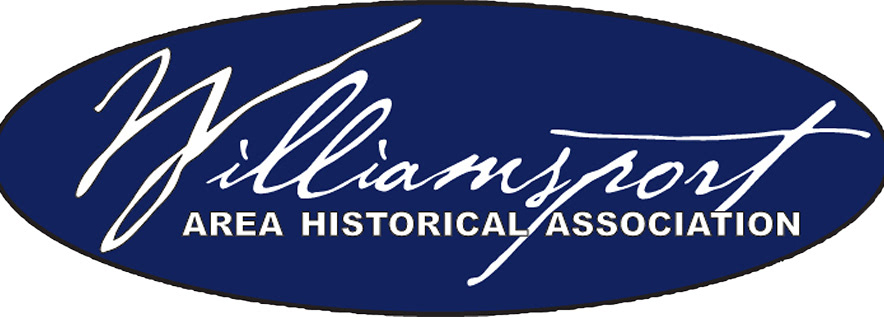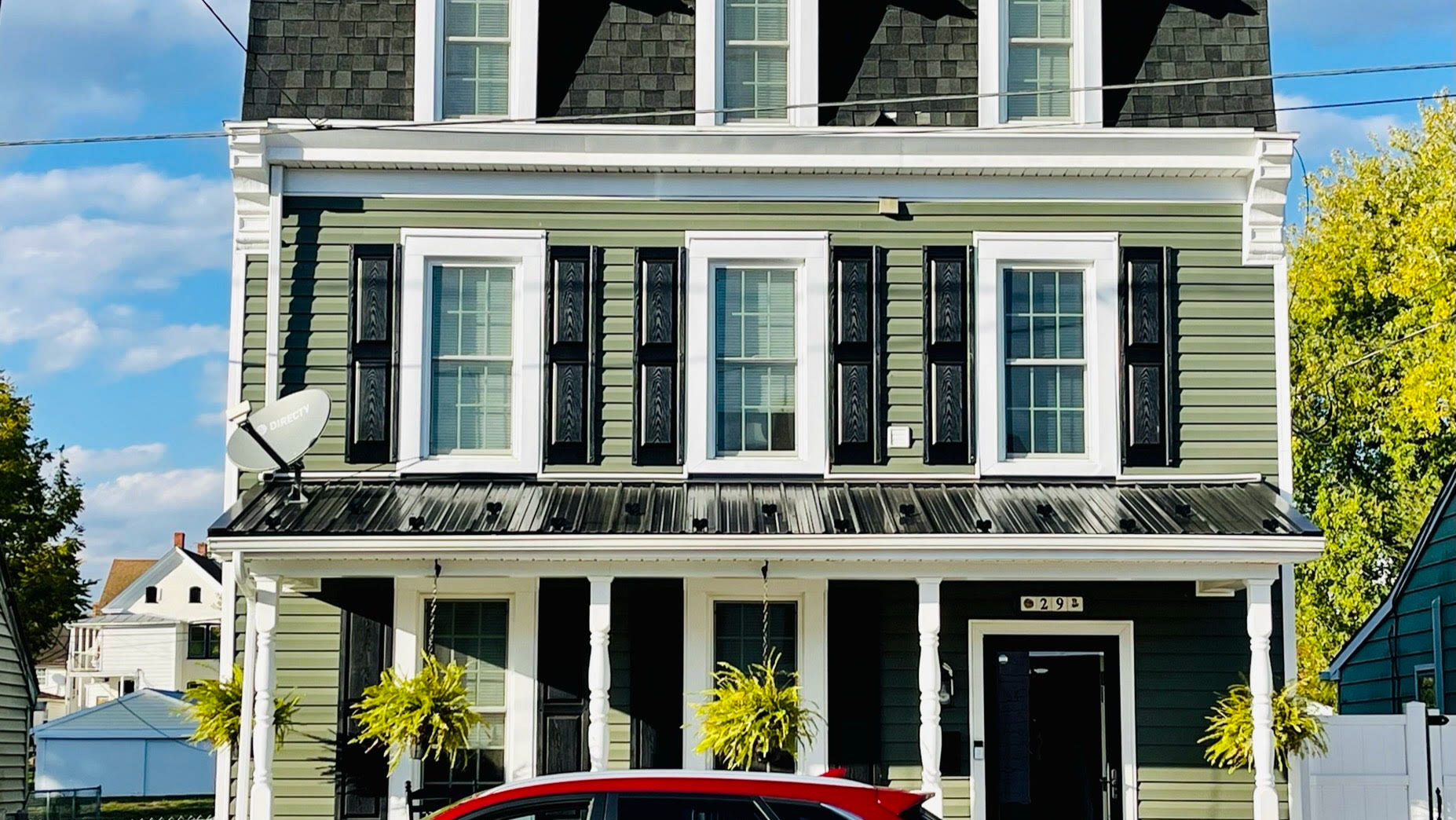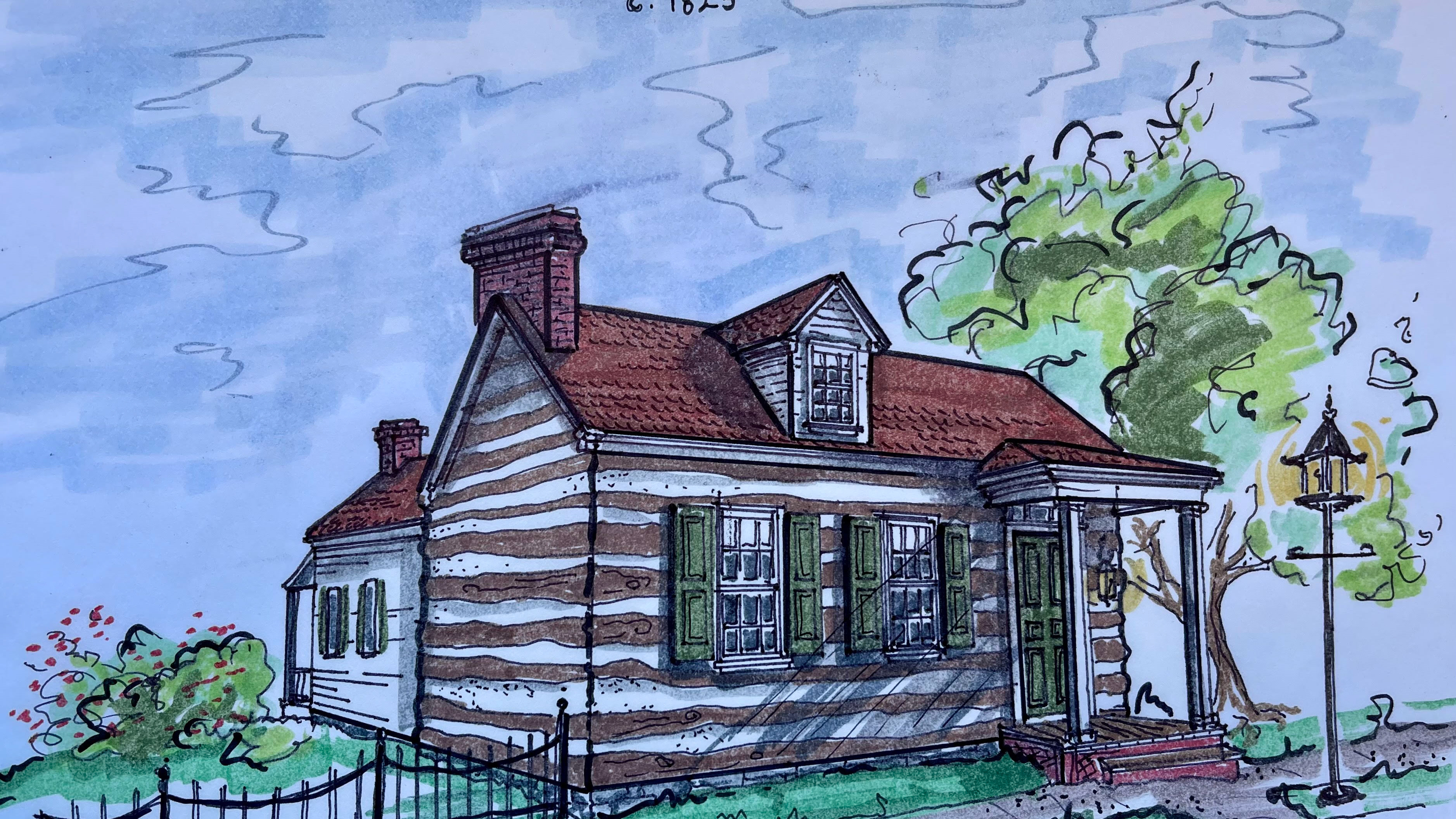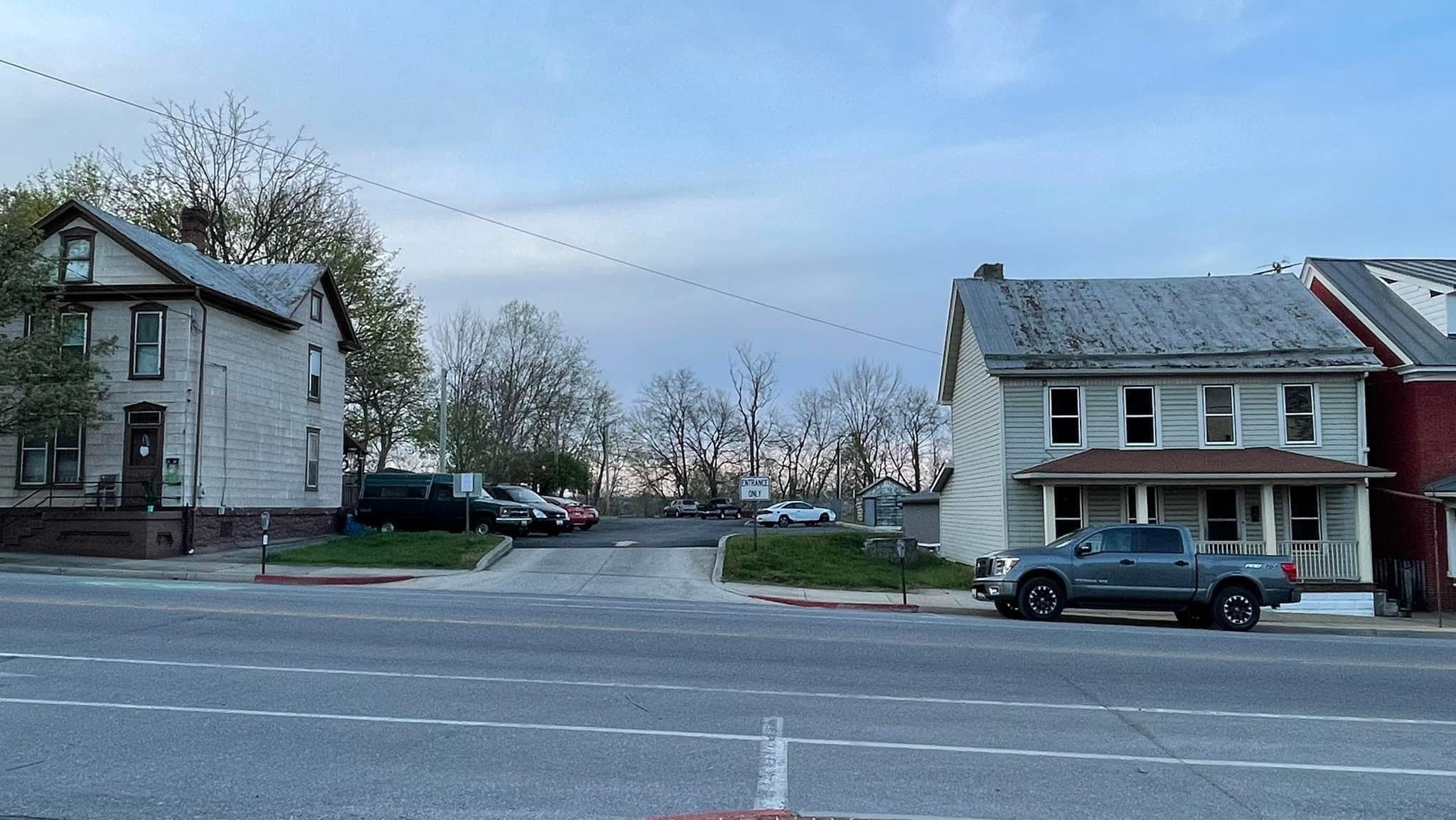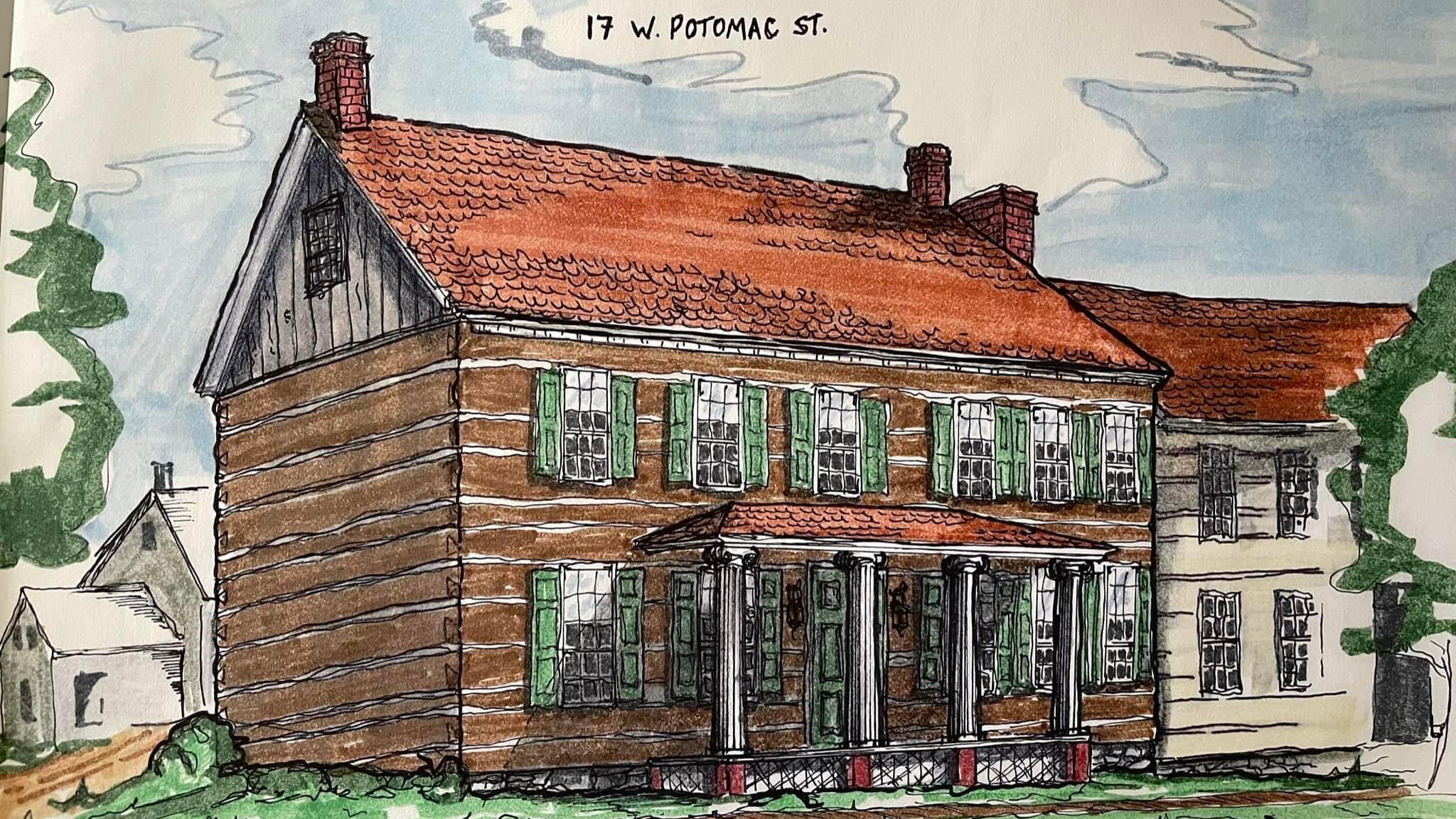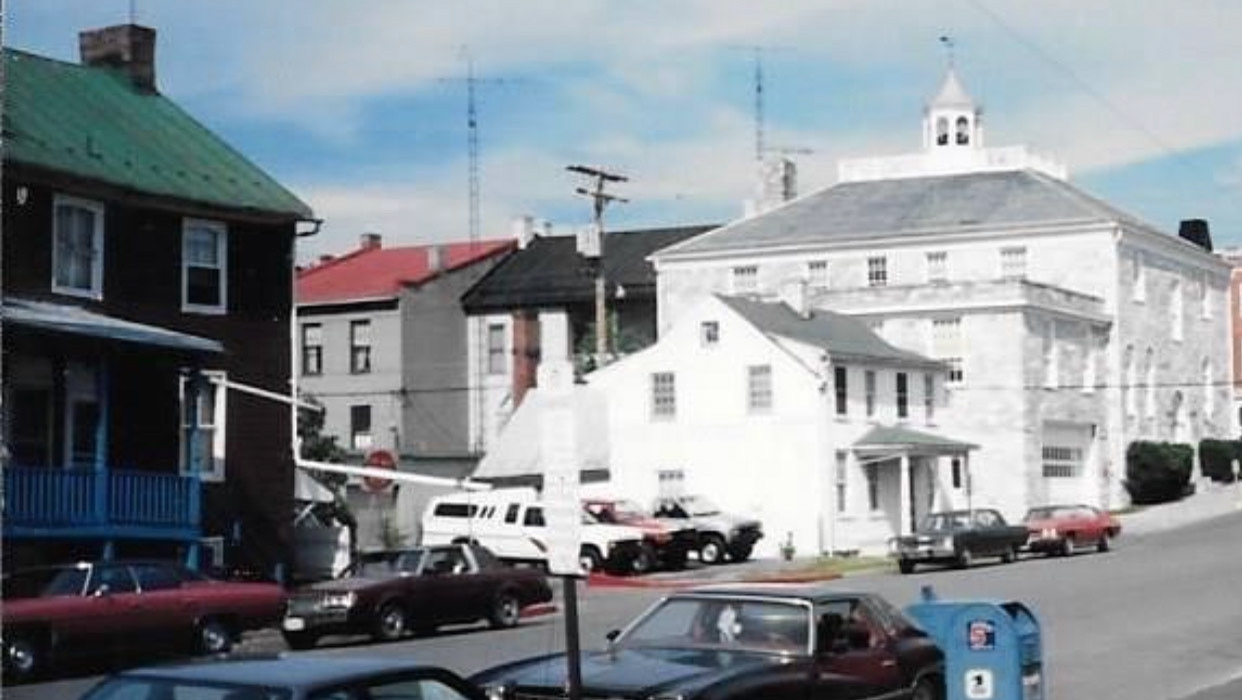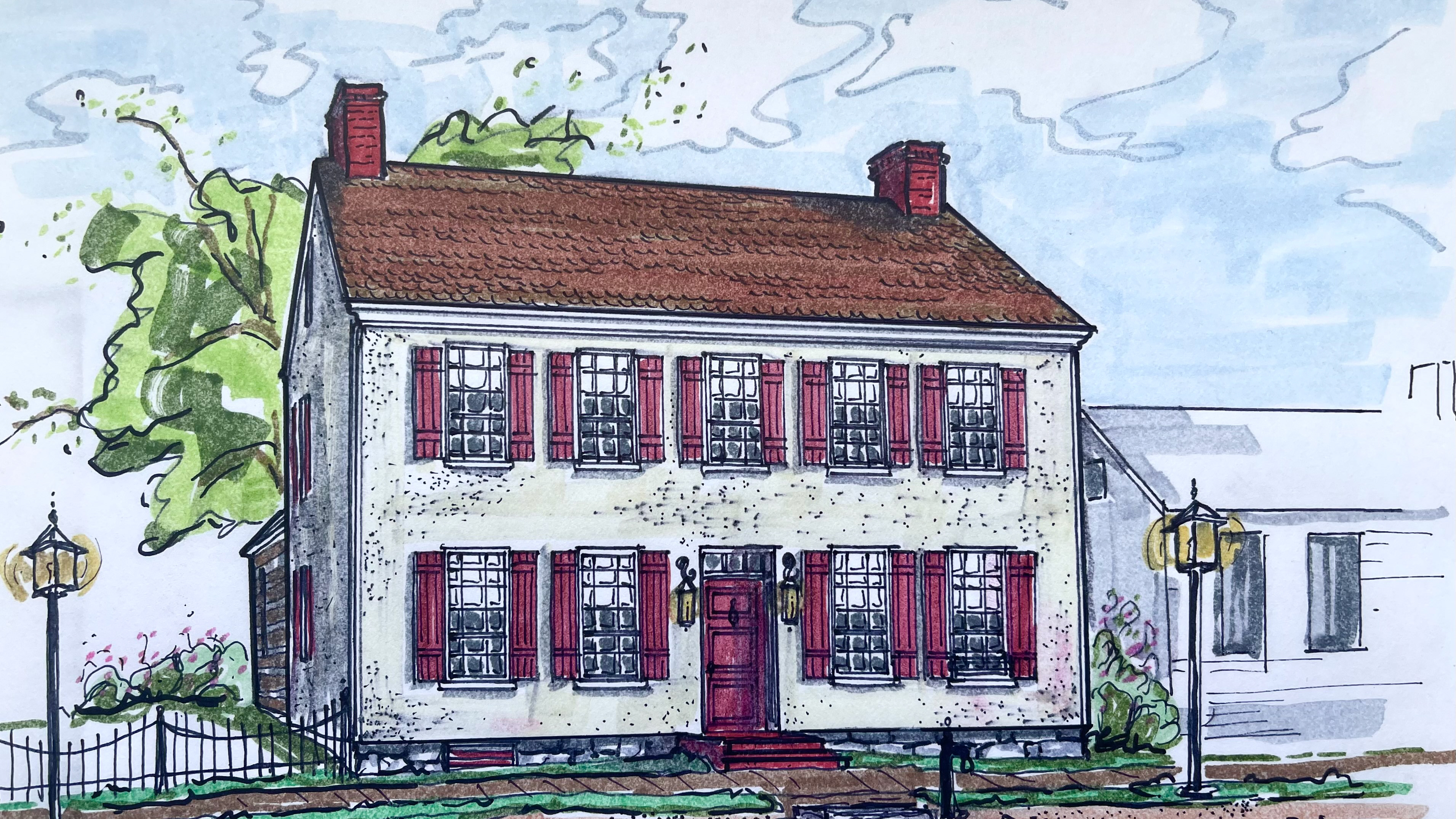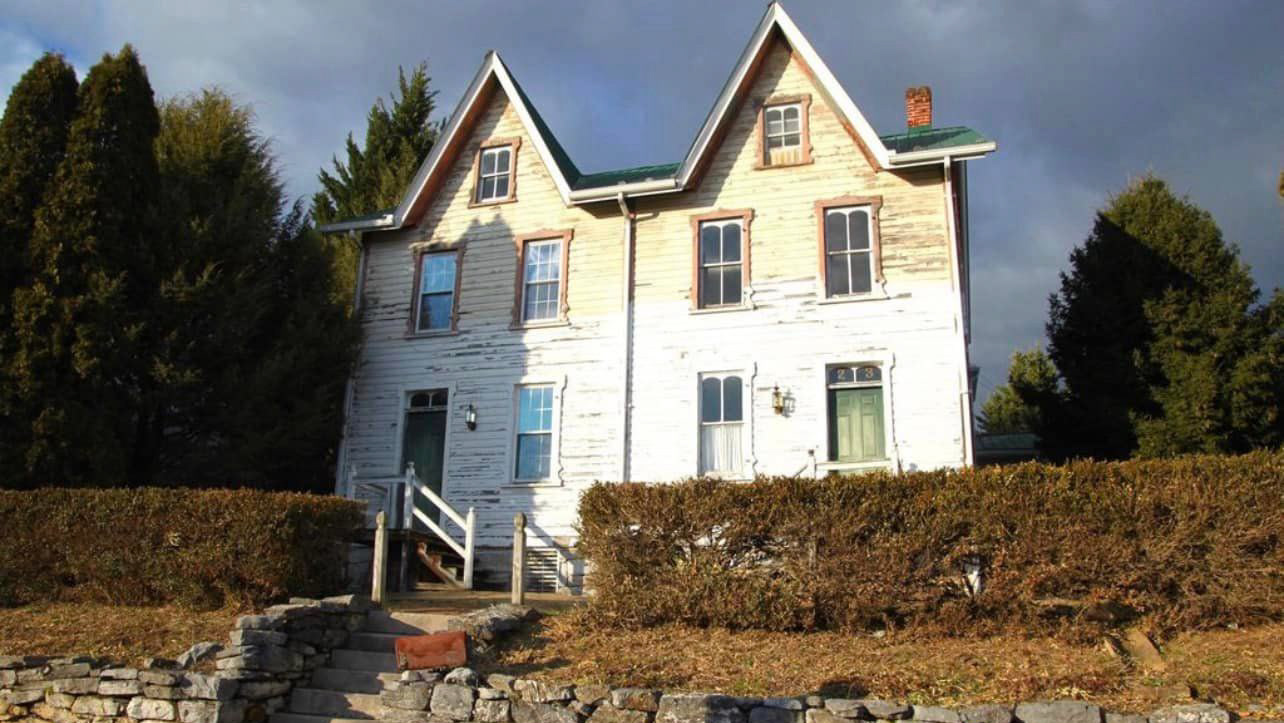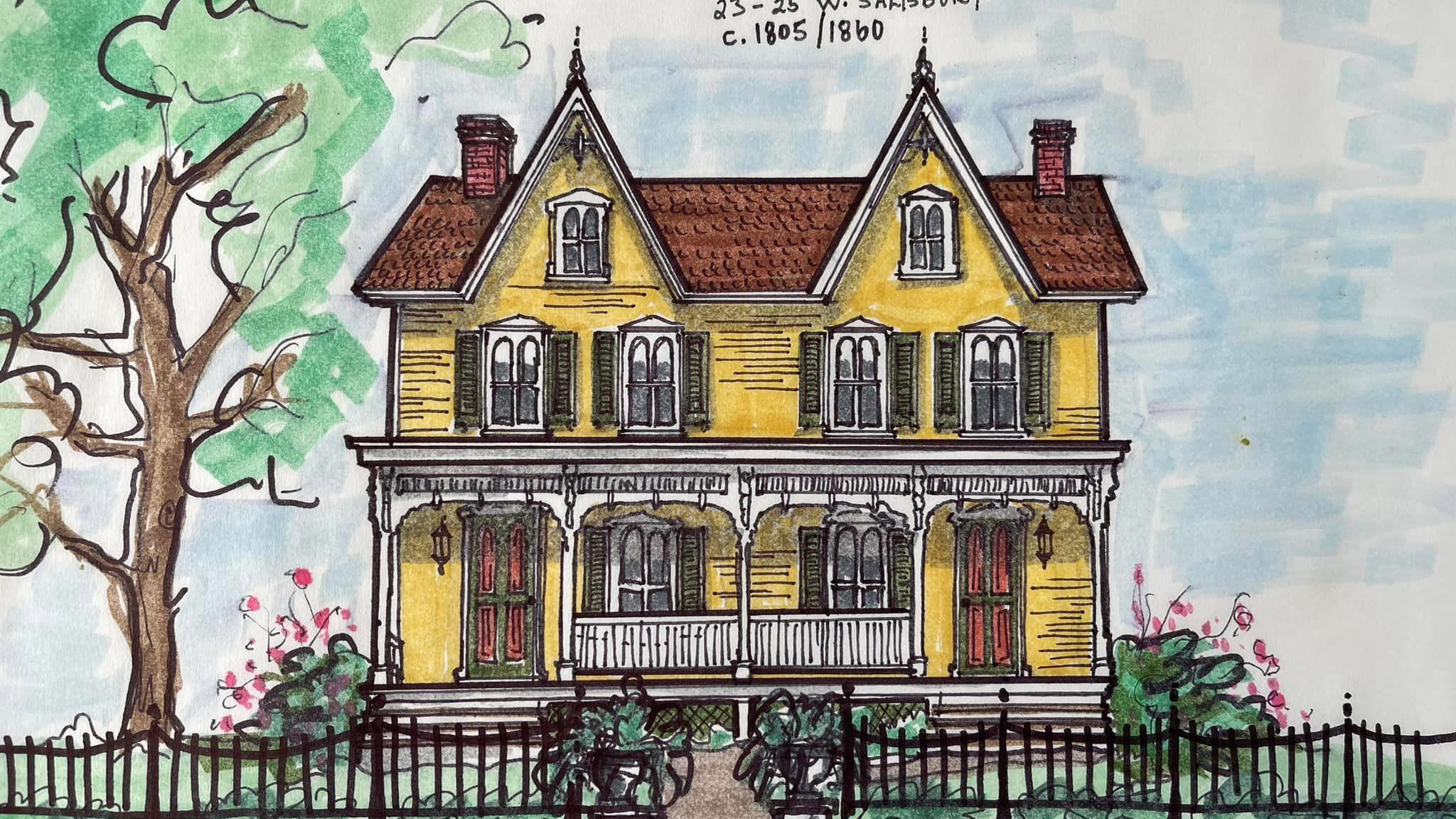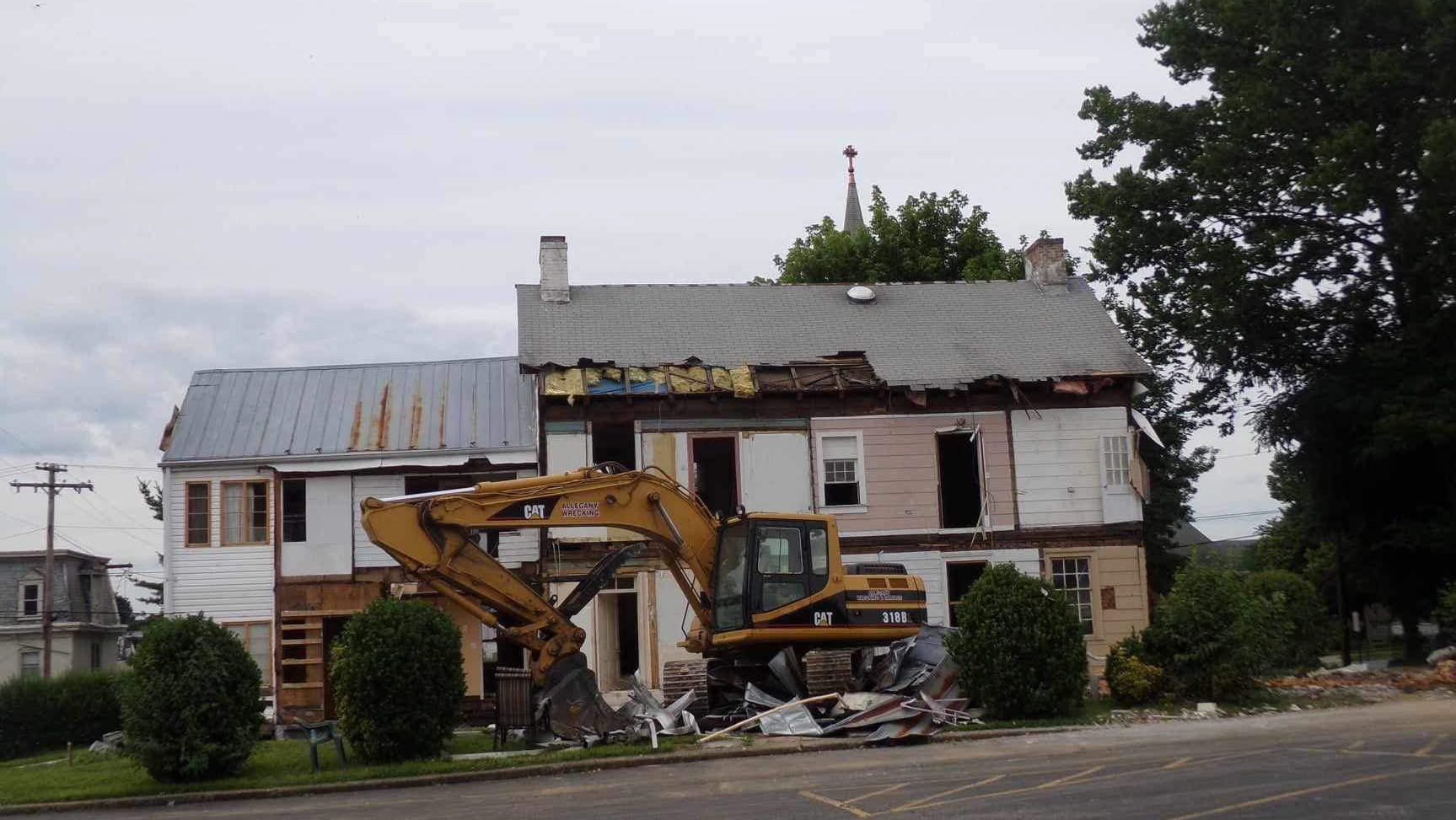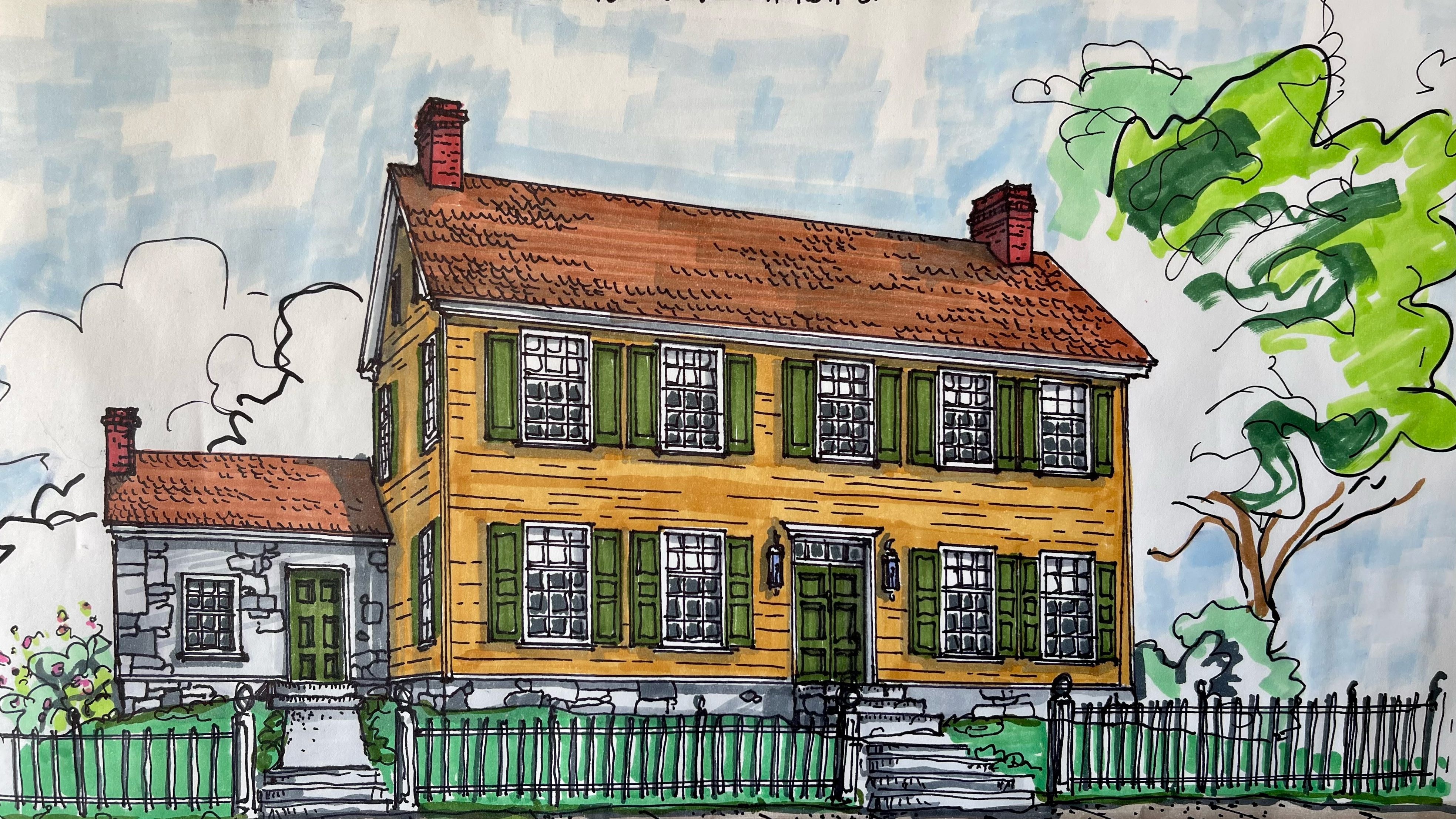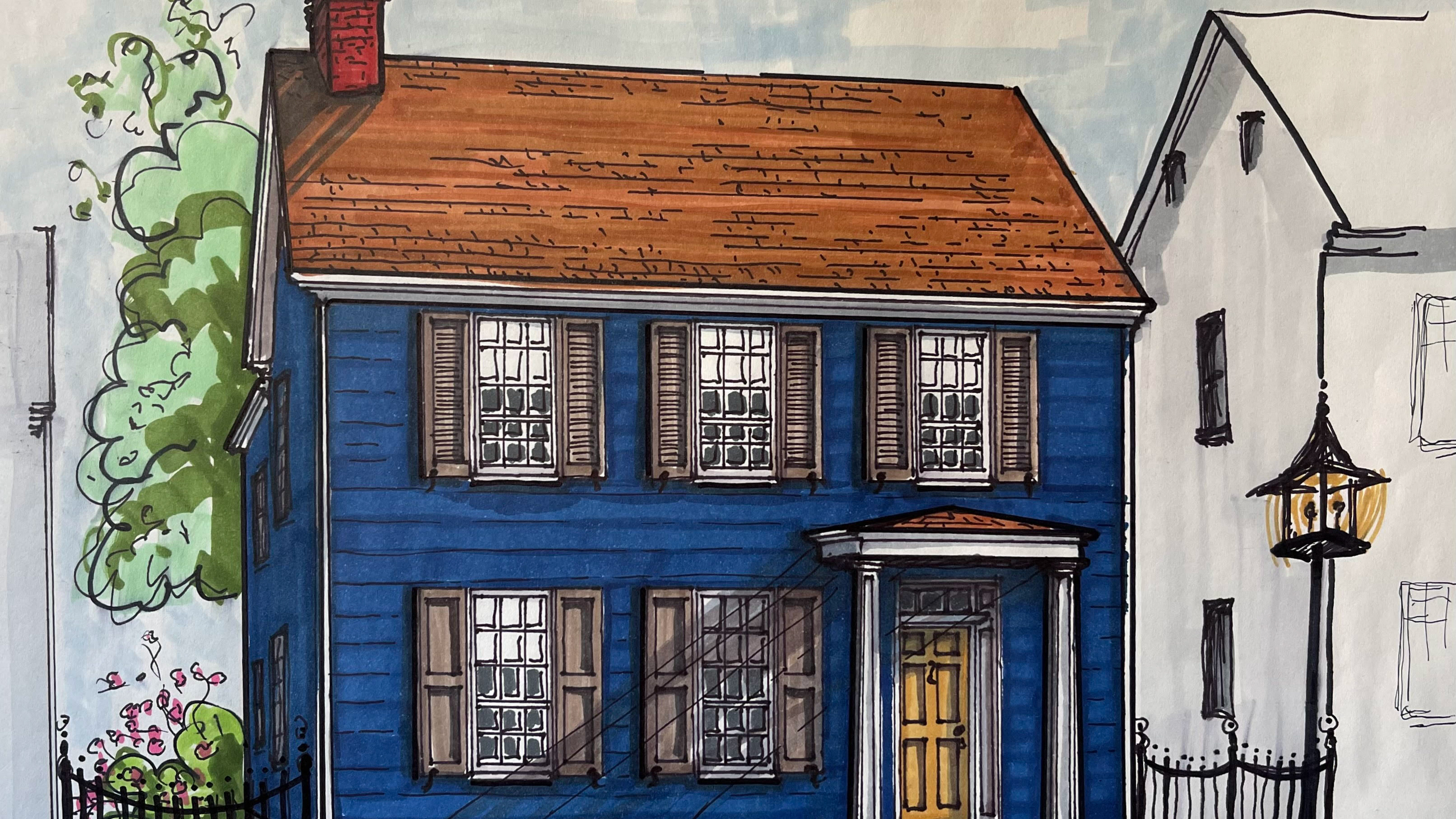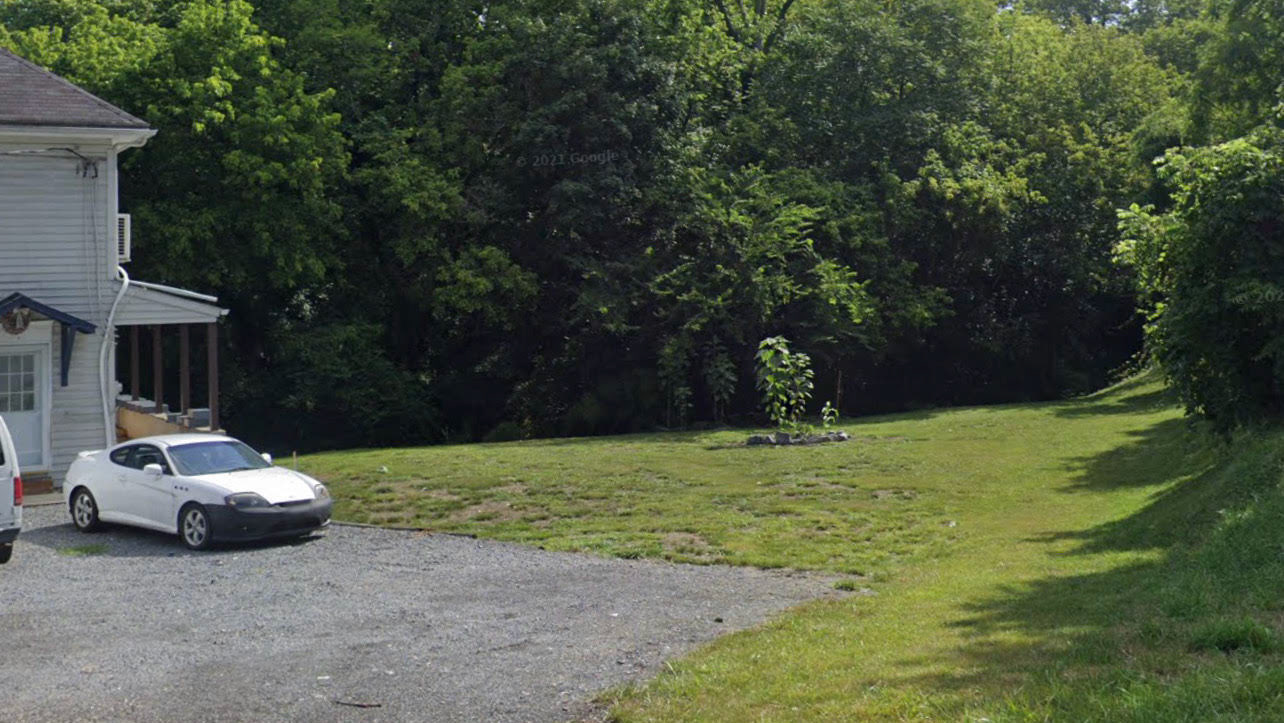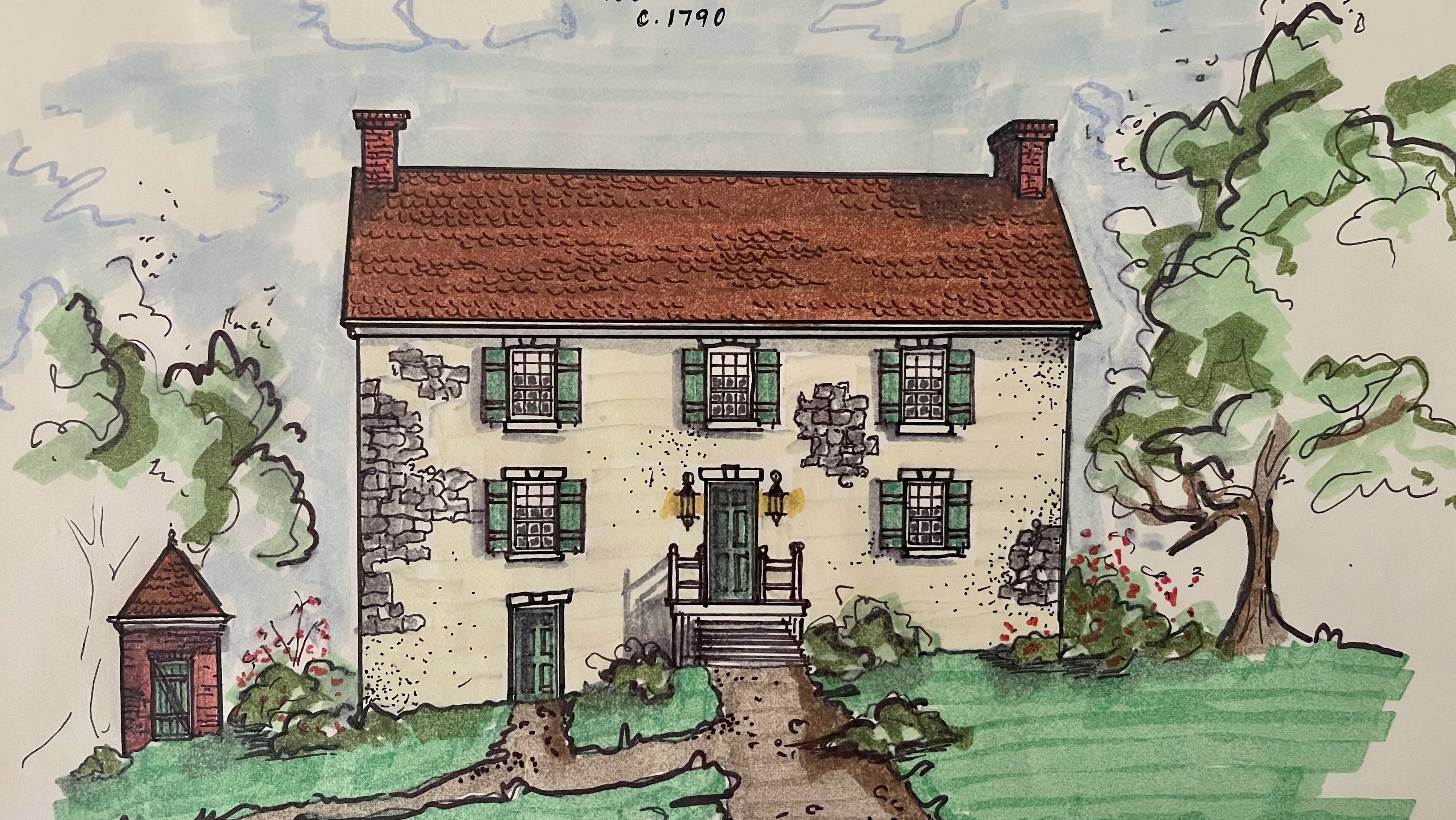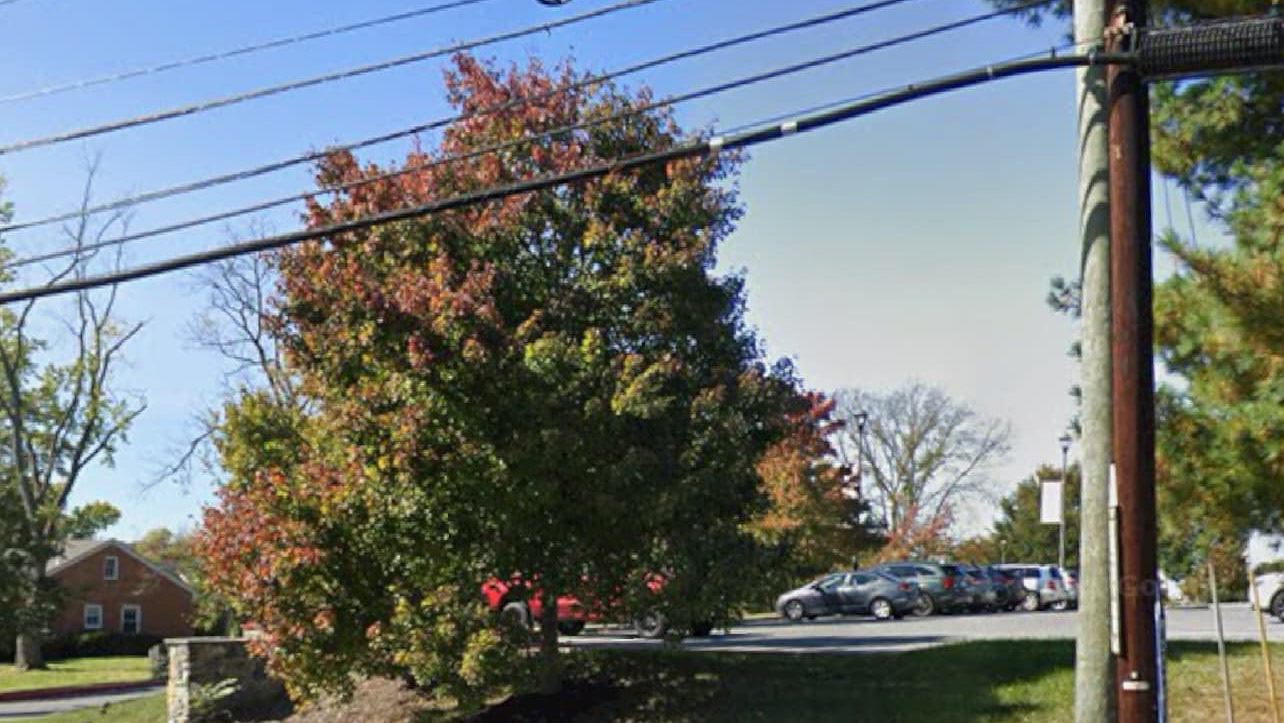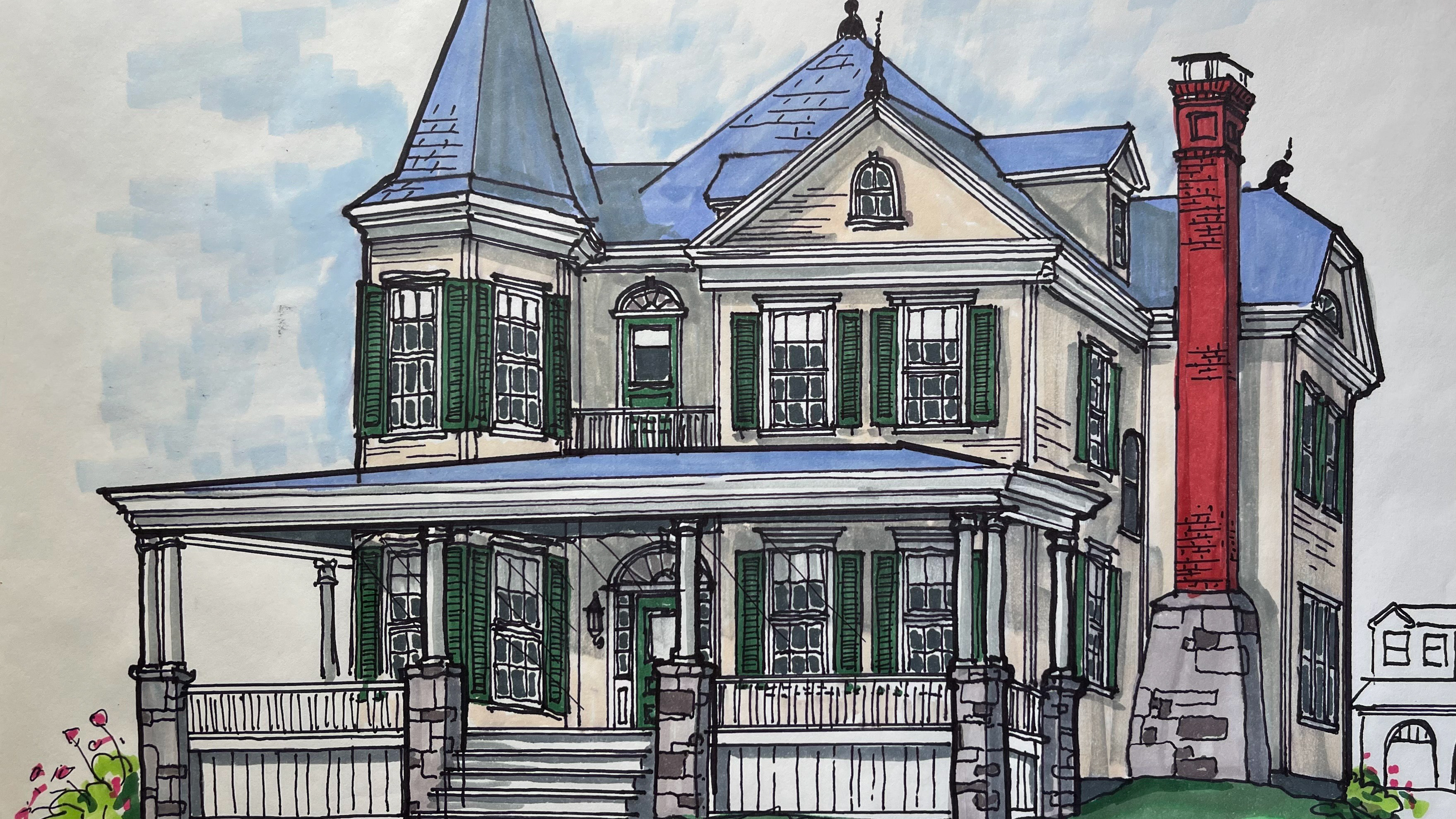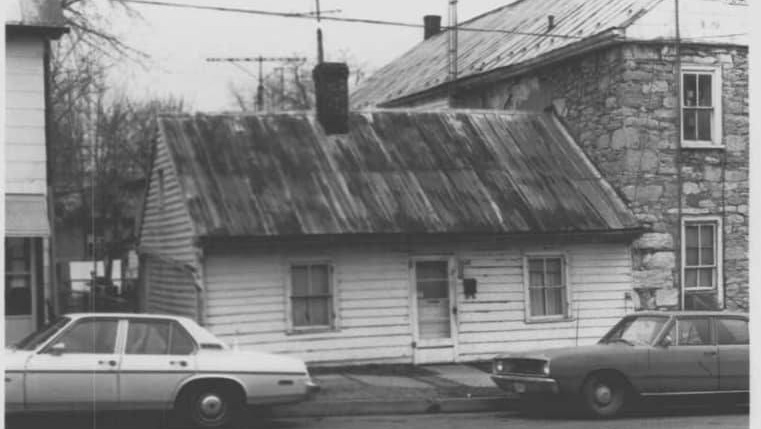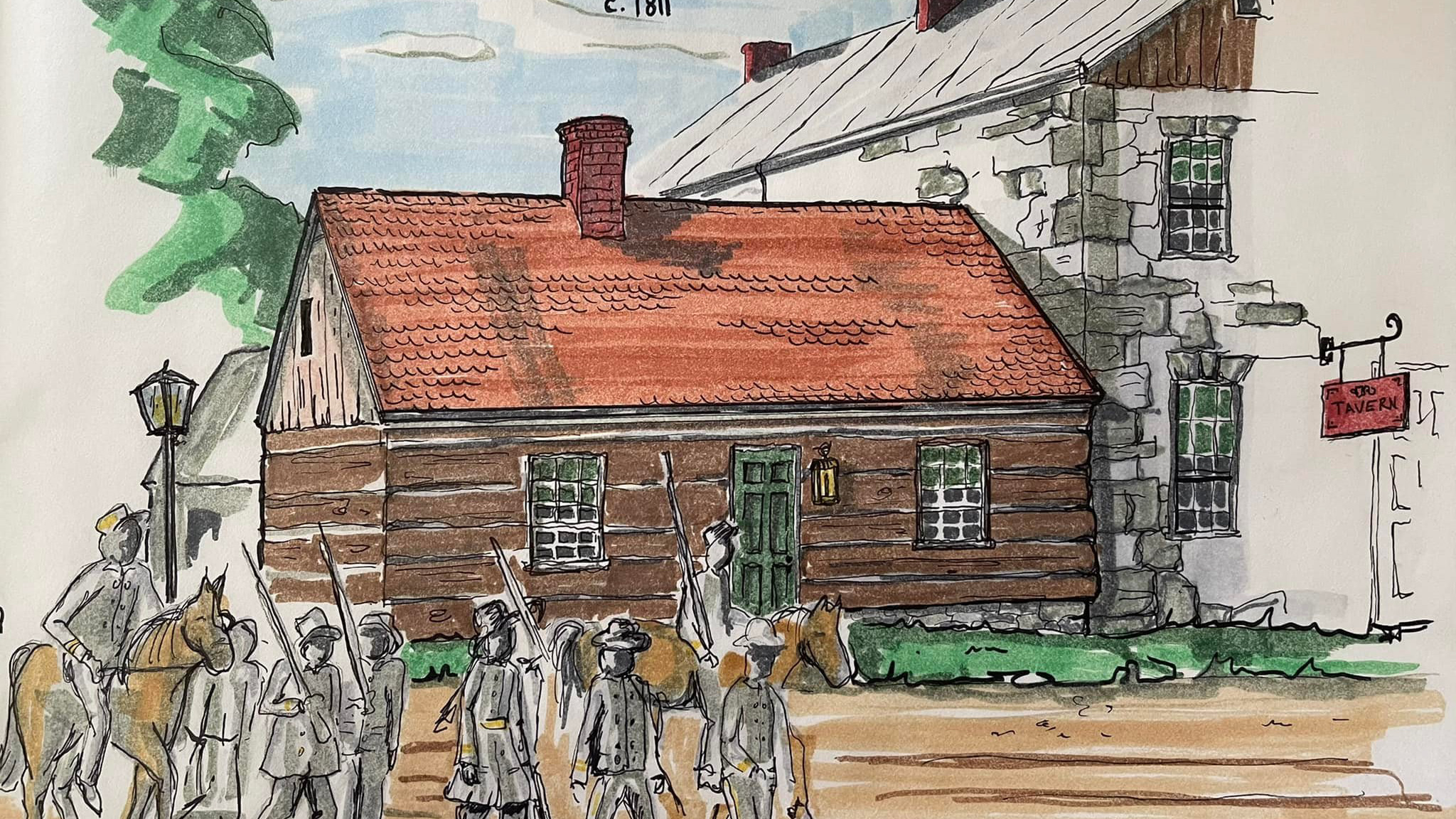Situated on the north side of East Potomac Street sits a handsome stucco-covered brick and stone Federal-Style house. The home is three-bays wide and six-bays deep, a rather large home for the town. The lovely old residence sits on original lot 199. Unlike most other town lots that were divided over the years, this home stands on a whole town lot. The house began its 210-year history as a stone cottage built by Jacob Towson in 1812. It was enlarged in about 1835 to its present-day form.Sometimes referred to today as the "Gray Lady," the home was built by wealthy Williamsport merchant Jacob Towson. Towson developed much of the town as we know it today, building houses and inns and providing loans and mortgages, among other endeavors. Sadly, the Towson home at 14-16 W. Potomac Street was lost to demolition. Towson leased lot 199 from the Williams Family in 1811 with the standard agreement to construct a house of log, stone, frame, or brick within three years. Towson met the terms of his lease and built a structure, and in 1817, he sold the lot to George Stall/Stahl for the considerable sum of $800. In 1817, $800 was huge sum to pay for a house and lot in Williamsport, the price reflecting its prime location along the main thoroughfare and significant improvements on the lot: a one-story stone house, stables, a well, fencing, and perhaps even a commercial building of some fashion.
George Steele/Stall/Stahl descended from an old Havre de Grace, Maryland family, moving to Washington County in the early 19th century. He married Margaret Shoup, whose father was born in Washington County in 1767. Very little is known about the Steele Family; they eventually moved west, settling in Missouri and Indiana.George sold the property to Michael Kreps in 1828, presumably as they were moving west. Michael and Mary Kreps lived for almost fifteen years in this house. Michael was a hatter and built a shop on the eastern half of the property for his prospering business.
In the early 1830s, Kreps enlarged the original stone structure by adding a full second story (using Cushwa brick) and a one-story, one-bay portico over the entrance. The interior was fitted with a grand staircase and gothic-influenced mantles. In 1835 a letter from Kreps and other town residents such as the Van Lear, Findlay, and Williams families detailed their desire to have the town's main streets paved with the Macadam technique. The Macadam technique was the first form of pavement in the United States. The first Macadam road was the National Road between Boonsboro and Funkstown in 1823. Michael Kreps passed away in 1840, and the home was sold to John and Catherine Parker in 1842.
In the early 1830s, Kreps enlarged the original stone structure by adding a full second story (using Cushwa brick) and a one-story, one-bay portico over the entrance. The interior was fitted with a grand staircase and gothic-influenced mantles. In 1835 a letter from Kreps and other town residents such as the Van Lear, Findlay, and Williams families detailed their desire to have the town's main streets paved with the Macadam technique. The Macadam technique was the first form of pavement in the United States. The first Macadam road was the National Road between Boonsboro and Funkstown in 1823. Michael Kreps passed away in 1840, and the home was sold to John and Catherine Parker in 1842.
John and Catherine Ensminger Parker moved into the large, stylish home and set up business in the former hat shop. John was a tailor, and the former hattery of Kreps was a perfect fit in not only function but the location in the center of bustling Williamsport. John and Catherine lived there quietly for eleven years, raising their six children. John contracted Cholera and passed away in 1853. Catherine stayed on in Williamsport for some time. In the 1860 census, she is still listed as living here, with her oldest son John as a clerk and son William as a painter. In an interesting turn of events, twenty-year-old William joined the Confederate Army, enlisting in Company E of the 1st Maryland Cavalry.
After the defeat at Gettysburg, Lee marched his army to Williamsport in July 1863, intending to return to Virginia. The Confederate army was trapped here for over a week as the flood water prevented them from crossing at the ferry. Young William Parker would have been among the thousands of Confederate stranded here in his childhood home. After the war, he and his brother headed west to Illinois, where they lived out the rest of their lives.
Just before the war, Catherine sold the home in 1859 to Hamilton Downs. Downs was born in Falling Waters, Va. In 1825, he settled in Williamsport and married Sarah LeFevre about 1849. Hamilton was in the transportation business for most of his life, later employed as the tax collector for the town of Williamsport, and held several political offices.
Hamilton passed away in 1896, and Sarah in 1915. Sarah lived in and loved the home for nearly sixty years. The house remained with the children and grandchildren of Hamilton and Sarah until 1966. The Downs family retained ownership of the home for 107 years.
When the home sold to the Hoffman family in 1966, she was beginning to show her age and in desperate need of repair. A gentleman who worked on the house that year recently visited the current owners (Richard and Cynthia Trogisch) and explained in detail what the home looked like at that time. It had been relatively untouched since the time of Hamilton and Sarah. The roof was leaking profusely, birds and other animals occupied the second floor, and very few modern updates were installed. An old cistern in the side garden was filled with relics of another era. Hoop skirts and old journals lay at the bottom of the cistern, only to be filled in with debris from the renovation. The home changed hands a few times until, in 1983, it was sold to the Glesner family, who loved and cared for it for many years. In the latter years of the Glesner ownership, the home again fell onto hard times and was sold to a flipper in 2020 who did quick work on the old homestead. The house was purchased in late 2020 by Richard and Cynthia Trogisch.
Richard and Cynthia Trogisch relocated to Williamsport from Washington, DC, where Richard was principal of the internationally renowned School Without Walls in Foggy Bottom. Mr. Trogisch built the school beginning in 2006 until his retirement in 2020. This school is still considered one of the top-rated schools in the nation for politically and socially prominent families of DC. Mrs. Trogisch was a longtime math teacher in Georgetown and retired in 2016. The Trogisch's chose Williamsport after falling in love with the county when they would weekend at our former home Cool Hollow House on the Antietam Creek north of Boonsboro. They also wanted to be closer to their sons, Tom Freeman and Ben Tinsley, the writers of these submissions and now the owners of the Banking-Mansion.
In retirement, Cindy and Rich enjoy travel, spending time with their family, gardening, restoring their home, and helping run our historic Bed & Breakfast in Funkstown, the Keller House. Rich and Cindy have restored the old home within the last two years. Completed projects include adding a new kitchen, new HVAC, paint, fencing, and a lush flower garden complete with a koi pond. Antique shutters are being restored and will soon replace the contemporary ones. The fine old residence is decorated with family antiques and objects from their world travels. Cindy volunteers weekly at the Williamsport History Museum, donating her considerable talents to reorganize the museum's artifacts, construct displays, and curate the beautiful museum we now have. The Trogischs enjoy living in Williamsport, and the community has widely appreciated their efforts to restore one of the older remaining homes in town. Preservation and restoration of our historic structures are key to our town's future success. Williamsport's history is important and should be protected.
